Could Redshifts Be Intrinsic Rather than Cosmological?
How do we know that the redshifts of galaxies and quasars are cosmological and not “intrinsic?”
Evidence for the cosmological interpretation
The purpose of this FAQ entry is to explain why nonstandard interpretations of redshifts are not viable, not to explain from scratch how standard cosmological models were arrived at. The following is only a very brief recapitulation of where the standard models came from.
Doppler shifts of galaxies have been used as an observational tool since 1917, and the discovery of the Hubble law in the 1920s was interpreted as evidence for Lemaître’s “primeval atom” model, now referred to as the Big Bang. The interpretation of the redshifts in terms of the expansion of the universe is natural because it is required by general relativity. General relativity’s predictions of Doppler shifts have been confirmed in a variety of ways. Gravitational Doppler shifts have been observed in the laboratory,[Pound] kinematic Doppler shifts in the lab are found to match relativity’s predictions to parts-per-billion precision,[Saathoff] and radio communication with uncrewed space probes requires extremely precise verification of both general relativity as a whole and its predictions of gravitational and kinematic Doppler shifts.[Will] Anyone who uses a GPS receiver is verifying general relativity’s description of Doppler shifts.[Ashby]
Proposal of “intrinsic” redshifts by Arp et al
In the 1960s, Arp, Burbidge, and Tifft proposed a radical revision of this picture. Based on claimed statistical anomalies and images of specific objects, they suggested that some unknown physical mechanism would allow a galaxy or quasar’s radiation to be affected so that a nearby observer, at rest relative to the object, would observe a redshift when the radiation was initially emitted. They refer to these as “intrinsic” Doppler shifts. Unlike the Doppler shifts predicted and verified experimentally by relativity, “intrinsic” Doppler shifts are not consistent with any of the known theories of physics, and their existence is not supported by any experiments. Claims that they exist are based solely on supposed inconsistencies between observation and cosmological models.
Arp et al. gave several types of observational evidence that they claimed conflicted with the standard explanation of redshifts, but these claims were incorrect:
They listed examples of objects that appeared to be associated with one another, but that had different redshifts. The trouble with this is that it is difficult to demonstrate that the objects are really physically associated, rather than just happening to coincide on the celestial sphere as seen from our planet. For example, Stephan’s Quintet[Moles] is a group of five galaxies, of which four have matching redshifts, while a fifth, NGC 7320, does not. Images from the Hubble Space Telescope[Gallagher] show that NGC 7320 has much stronger surface brightness fluctuations than the other four, verifying that it is closer and not physically associated with them.
They claimed statistical correlations between low-redshift galaxies and high-redshift quasars appearing close to one another on the celestial sphere. These claims were suspect because of small sample sizes and biased sampling. A large and unbiased sample from the Sloan Digital Sky Survey shows that the correlation is exactly as expected from standard models when gravitational lensing is taken into account.[Scranton]
They found that in systems of galaxies whose physical association was not controversial, there were statistical anomalies in the redshifts so that larger redshifts were more frequent for the dimmer members. Systematic errors make these studies unreliable,[Keel] and Arp’s statistical methods were incorrect.[Newman]
Consistency checks
We have a variety of consistency checks that verify the cosmological nature of the redshifts of distant galaxies and quasars. Each of these pieces of evidence supports the cosmological interpretation of redshifts, and each is inexplicable if the redshifts are intrinsic.
When both a quasar and its host galaxy can be detected, their redshifts are found to be consistent.[Stockton]
When a quasar’s spectrum shows absorption lines due to neutral hydrogen clouds, the redshifts of the hydrogen lines (Lyman-alpha forest) are always found to be less than the redshift of the quasar. Furthermore, examples have been found in which the absorption spectrum shows a feature called the Gunn-Peterson trough,[Becker] which had been predicted 36 years earlier as a consequence of the reionization of hydrogen in the early universe.
Finally, in examples of gravitational lensing where the redshifts of both the lens and the lensed object can be measured, it is always found that the former is less than the latter.
A more detailed review of the evidence is given at http://www.astr.ua.edu/keel/galaxies/arp.html .
Pound and Rebka, Phys. Rev. Lett. 4 (1960) 337
Saathoff et al., Phys. Rev. Lett. 91 (2003) 190403. A publicly available description of the experiment is given in Saathoff’s Ph.D. thesis, http://www.mpi-hd.mpg.de/ato/homes/saathoff/diss-saathoff.pdf
Will, “The Confrontation between General Relativity and Experiment,”http://relativity.livingreviews.org/Articles/lrr-2006-3/
Ashby, “Relativity in the Global Positioning System,” http://relativity.livingreviews.org/Articles/lrr-2003-1/
Moles, Marquez, and Sulentic, Astronomy, and Astrophysics 334 (1998) 473, http://arxiv.org/abs/astro-ph/9802328
Gallagher et al., Astron. J. 122 (2001) 163, http://arxiv.org/abs/astro-ph/0104005
Scranton et al., Astrophys. J. 633 (2005) 589, http://arxiv.org/abs/astro-ph/0504510
Keel, Ap. J. Supplement 106 (1996) 27, http://adsabs.harvard.edu/cgi-bin/n…JS..106…27K&db_key=AST&high=38cd69c6db04217
Newman, Ap. J. 441 (1995) 505, http://articles.adsabs.harvard.edu/full/1995ApJ…441..505N
Stockton, Ap. J. 223 (1978) 747, http://adsabs.harvard.edu/cgi-bin/n…J…223..747S&db_key=AST&high=3325b47acc08258
Becker et al., Astron. J. 122 (2001) 2850, http://arxiv.org/abs/astro-ph/0108097
The following forum members have contributed to this FAQ:
bcrowell
George Jones
jim mcnamara
marcus
PAllen
tiny-tim
vela
Commenting for this FAQ has been disabled
This article was authored by several Physics Forums members with PhDs in physics or mathematics.

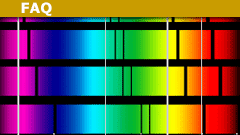
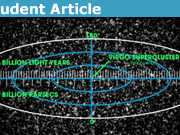
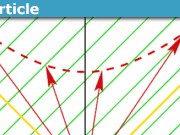
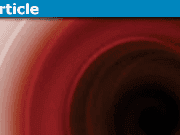
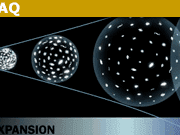
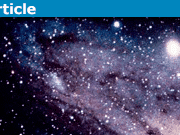
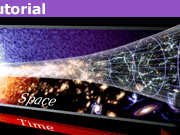
Leave a Reply
Want to join the discussion?Feel free to contribute!